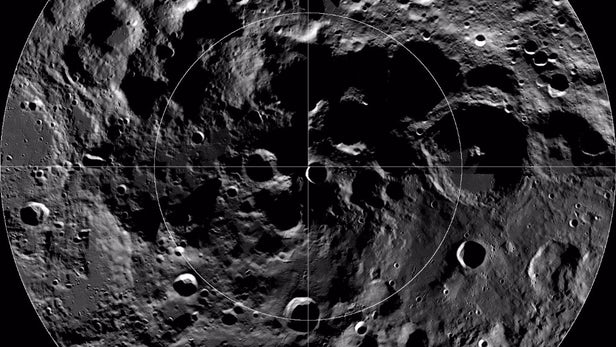
Weird holes on the surface at ‘lunar poles’ might lead to hidden ice tunnels
The scientists from SETI Institute have accumulated data obtained via NASA’s LRO (Lunar Reconnaissance Orbiter) that pointed out towards the possibility of a significant quantity of water available over our moon. The prehistoric lava tubes located in the north pole of our moon might lead to a substantial amount of water. Scientists have located small openings present on the surface of the moon which could be “skylights” that lead to gigantic subterranean caves that were formed somewhere around 100,000 million years ago.
The findings of this study were presented at the Ames Research Center by Pascal Lee of SETI in California. He stated that going by the data available via the picture, the Philolaus Crater cannot be identified as a skylight for lava tube with perfect certainty. However, these tubes act as a great candidate for being skylights due to their shape, lighting conditions, geological settings, and size.
The pits can be accessed via openings that are almost 100 feet wide across which leads to caverns that are permanently shadowed. They also consist of long channels that go in various directions which were formed due to lava flowing inside these caves.
The task of extracting ice directly from the lunar surface could be a difficult task and these underground glaciers could provide easy access to ample water sources. However, it has not been known to the scientists for sure that the lava tubes house ice or not. If present, it could be in humongous quantities just like lava tubes on Earth that are cold. Additionally, solar power could also be used for this endeavor because the skylight would provide a comparatively easy access to the world beneath the lunar surface.
These lava tubes could also be a great base for long-term moon based missions. Apart from an exploration of the caves, these tubes shall provide an insight into the formation of moon and events followed thereafter. It could help change the way lunar missions are planned and could bring new possibilities for an expedition to the Red Planet for the potential of life.
As the scientists explore the lava tubes in Moon, the possibility of exploring the same on Mars also increases which could lead to huge possible reserves of solid water (ice). The caves beneath might house an environment that is warmer as well as wetter as compared to the surface which might help provide a great place for shelter.
Prior to this discovery, scientists have managed to find around 200 lava tubes on the lunar surface at different places. However, the presence of such tubes on the pole is what attracted the interest of the scientists. The polar locations being permanently shadowed location could house a significant amount of water.


